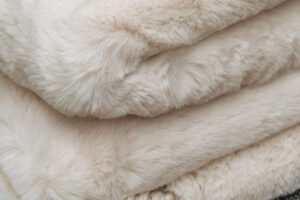One of the most fundamental principles of Islamic belief and practice is prayer. It is an intimate moment of submission, self-analysis, and devotion where a believer connects directly with their Creator. The Islamic prayer mat is an essential component of this act of worship. A modest and deeply significant reminder that is vital to the lives of millions of Muslims worldwide. We will explore the rich history, materials, symbolism, and significance of the Islamic prayer mat in Muslim culture in this extensive publication.
The Past and Its Importance
In Islam, prayer mats have been used since the beginning of religion. Islamic tradition is deeply connected with the idea of a clean and dedicated place for prayer. Even though it is specifically addressed in the Quran. To create an improvised prayer area, Muslims would use their cloaks or clothing on the ground. Prayer mats are now a more sensible and cozier alternative to this tradition.
Islamic prayer mats have several significant functions.
-
Clean and Pure Space:
Praying on the prayer mat offers a pure and clean surface. It guarantees that the worshipper is kept away from any potential pollutants that may be on the ground.
-
Directional Guidance:
Most prayer mats feature a unique pattern with a mihrab (a niche or design) showing which way the Kaaba is in Mecca. This is known as the qibla, which is the direction Muslims face while they pray.
-
Comfort and Focus:
The prayer mat’s padded, soft surface provides support for the physical actions of prayer, freeing the worshipper to concentrate on their relationship with Allah.
-
Personal Space:
Every Muslim’s prayer mat serves as their place of devotion. In the middle of a crowd of worshippers, it offers a feeling of isolation and separation.
-
Symbolism:
The prayer mat represents the act of surrendering to Allah and the sacredness of prayer. It serves as a reminder of the significance of consistent, sincere prayer in a Muslim’s life.
Materials and Design
Islamic prayer rugs are available in an array of patterns and hues. Some are straightforward, while others are decorated with calligraphy, pictures of holy sites, or complex geometric designs. It is up to the individual to decide on the prayer mat’s design, which frequently reflects the worshipper’s cultural and geographical influences. Many mat users are distracted by their patterns and colors so Akimusalat provides Islamic prayer mats that are simple, soft, and neutral in color to safe from other thoughts while praying.
Caring for the Prayer Mat
The Islamic prayer mat is a valued ownership for many Muslims. Its care is a matter of respect and devotion.

islamic prayer mat
Here are some tips on how to care for a prayer mat:
-
Keep it Clean:
Make sure the prayer mat is tidy and clear of any dirt or contaminants to preserve its purity. Don’t put it on dirty surfaces.
-
Fold It Carefully:
Fold the prayer mat neatly and store it in a proper considerate way when not in use.
-
Avoid Walking on It:
Refrain from walking with any type of shoes or filthy state. Muslims have to take off their shoes when placing their feet on mats.
-
Frequent Cleaning:
Prayer mats should be cleaned. wash it with a hand or dry clean it.
-
Respectful Care:
Treat the prayer mat with consideration and respect. Do not throw it around or handle it carelessly.
The Islamic prayer mat is more than just a piece of fabric; it is a symbol of faith, devotion, and unity among Muslims worldwide. It serves as a physical and spiritual platform for one of the most fundamental acts of worship in Islam. Whether plain or adorned with intricate designs, made of cotton or silk, the prayer mat is a constant companion in a Muslim’s journey of faith. It is a reminder of the sacredness of prayer, the direction of the qibla, and the connection between the worshipper and the Divine. In its simplicity and significance, the prayer mat embodies the essence of Islamic devotion and spirituality.
